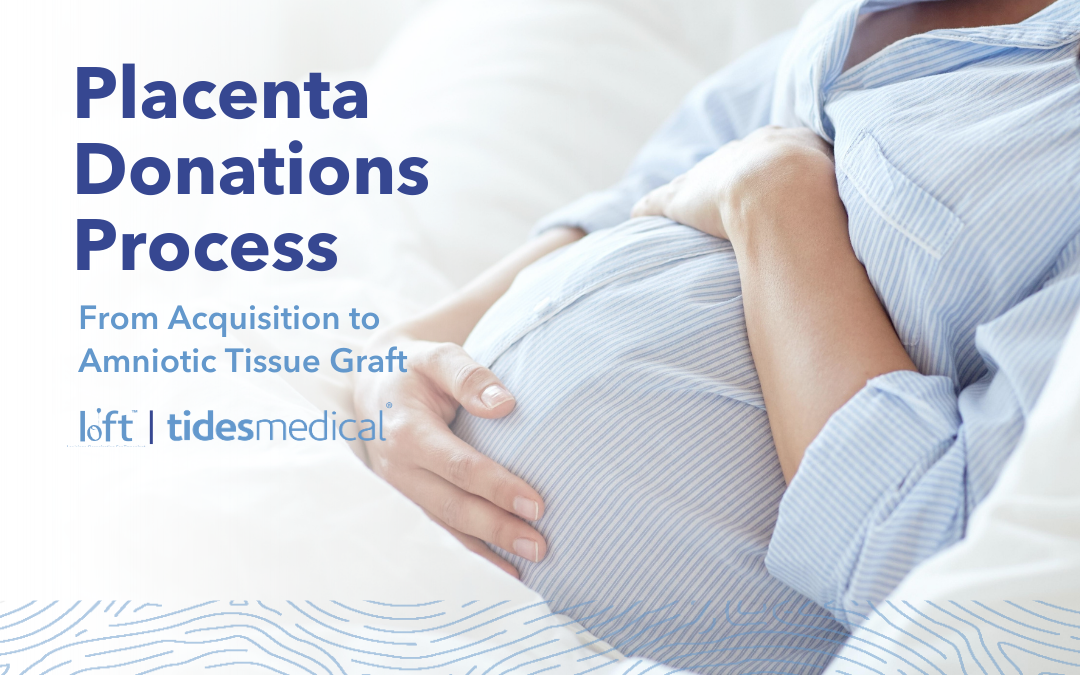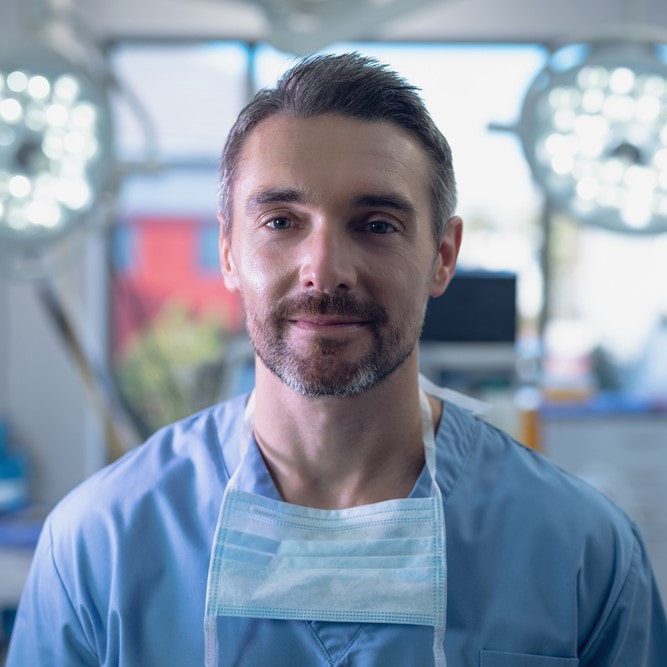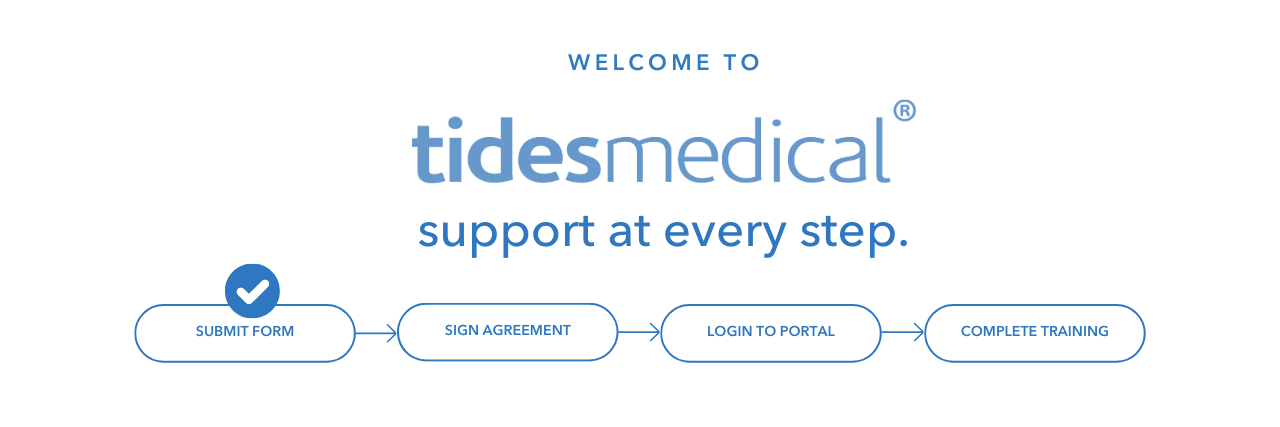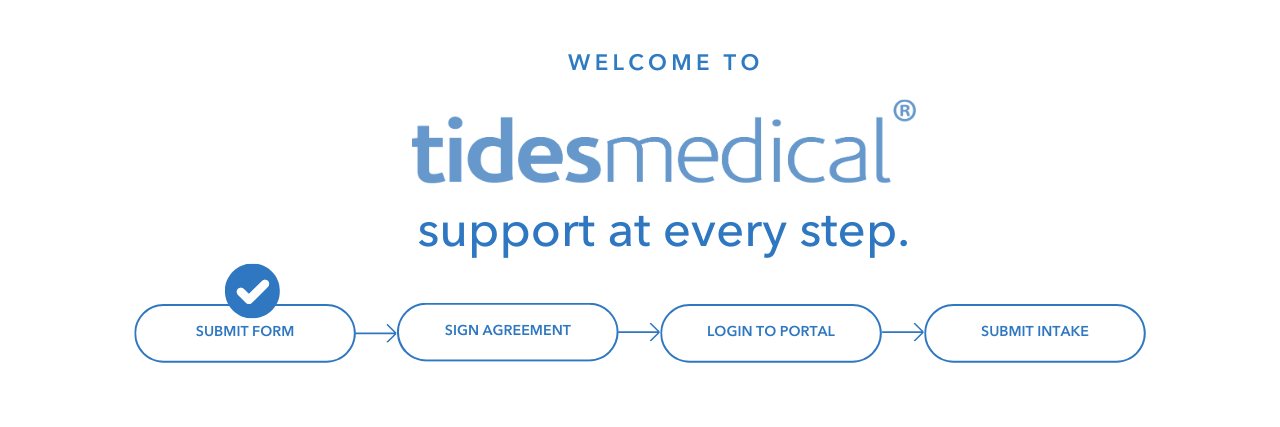The amniotic tissue graft and products we create at Tides Medical would not be possible without the generous donations of placentas and the work done by our Acquisition and Tissue Bank Processing Technicians. The purpose of this article is to dive into the full process from a mother’s decision to donate her placenta, all the way to the processing of our amniotic tissue grafts.
What is a placenta?
Who is LOFT?
Who transports the placenta to Tides Medical?
What is an amniotic tissue graft?
Why is this important and who does it benefit?
These are some of the questions we are often asked and hopefully by the end of this short read, you will have all your questions answered. Also, do not hesitate to contact Loft or Tides Medical for more information.
A placenta is an essential organ that develops during pregnancy and plays a crucial role in providing oxygen, nutrients, and waste elimination for the developing fetus. Some of its many functions include nutrient and gas exchange, hormone production, barrier and protection, and immune function. It plays a crucial role in the overall health and well-being of both the mother and the growing baby – and if donated, can also help many others after it serves its initial purpose.
Where does the placenta donation process begin?
LOFT (Louisiana Organization for Transplant) is a division of Tides Medical focused on placenta acquisition. LOFT is responsible for managing the donation process, ensuring the birth tissue is properly cared for and transported to the Tides Medical tissue bank. Pregnant mothers are provided LOFT pamphlets and information at hospital appointments to learn about the donation process, eligibility, and possibilities.
What happens on Donation Day? (Baby Day)
Once the decision to donate is made, LOFT will work directly with the mother and her healthcare team from pre-screening to donation. LOFT acquisition technicians are on call to participate in the mother’s c-section. A blood sample is collected to adhere to the highest level of safety regulations for donations. The LOFT team then preps and immediately following the birth, collects the placenta and transports.
What happens to the placenta after donation?
Once the placenta is transported and delivered to the Tides Medical Tissue Bank by the LOFT Acquisition Technician, the process of becoming an amniotic tissue graft begins. The Tides Medical Processing Technician dissects, washes, cuts, and packages products with utmost care and highest standards.
Why Your Placenta Donation Matters
Placenta donation is important for many medical and scientific reasons as they provide valuable resources that can be used to benefit patients and research efforts. Each placenta has the potential to help dozens of patients.
Amniotic tissue grafts are made possible because of the choice of placenta donation. Biologic companies like Tides Medical work with healthcare providers to provide access to these amniotic tissue products.
Your donation can impact dozens of lives. You can learn more about the benefits of donating your placenta in our previous post “Donations Make A Difference: The Placenta Donation Process”. If you are interested in becoming a part of this process at Tides Medical, check-out our career opportunities here. Join the Tides Medical team today and gain the satisfaction of knowing that work done at Tides truly makes a difference in the lives of others.



 Marc Stemler, Ph.D.,
Marc Stemler, Ph.D.,  Mora Melican, Ph.D., VP of Operations, Research & Development
Mora Melican, Ph.D., VP of Operations, Research & Development LESA CATALON,
LESA CATALON, DAVID CASTILLE,
DAVID CASTILLE,




 Dr. Thomas E. Serena MD FACS FACHM MAPWCA
Dr. Thomas E. Serena MD FACS FACHM MAPWCA JOSH WILLETT,
JOSH WILLETT, JEFF MONTGOMERY,
JEFF MONTGOMERY, MIKE RIDDLE,
MIKE RIDDLE, BENJAMIN KIMBALL,
BENJAMIN KIMBALL, DOUG PAYNE,
DOUG PAYNE, JOE SPELL,
CEO
JOE SPELL,
CEO


